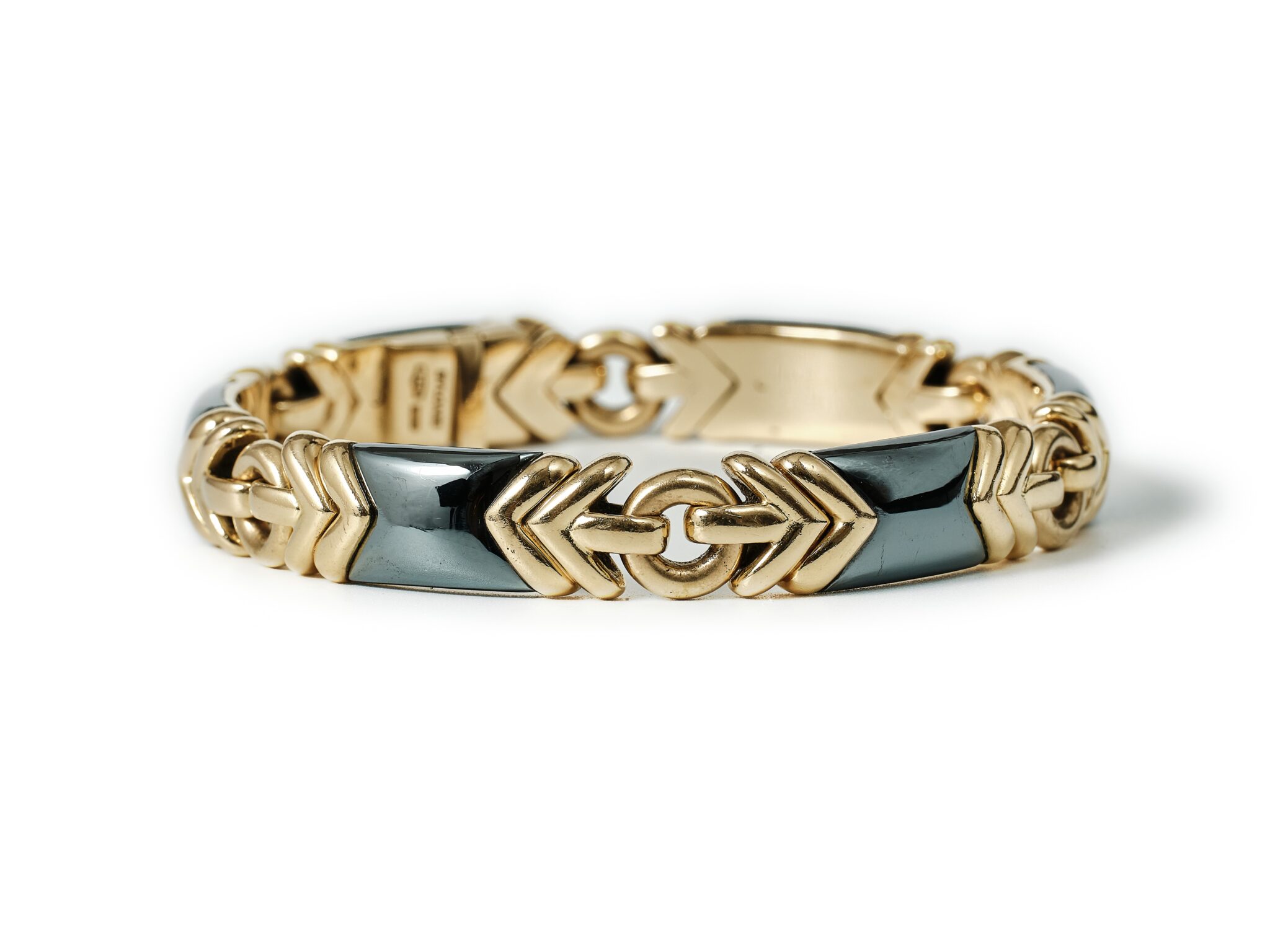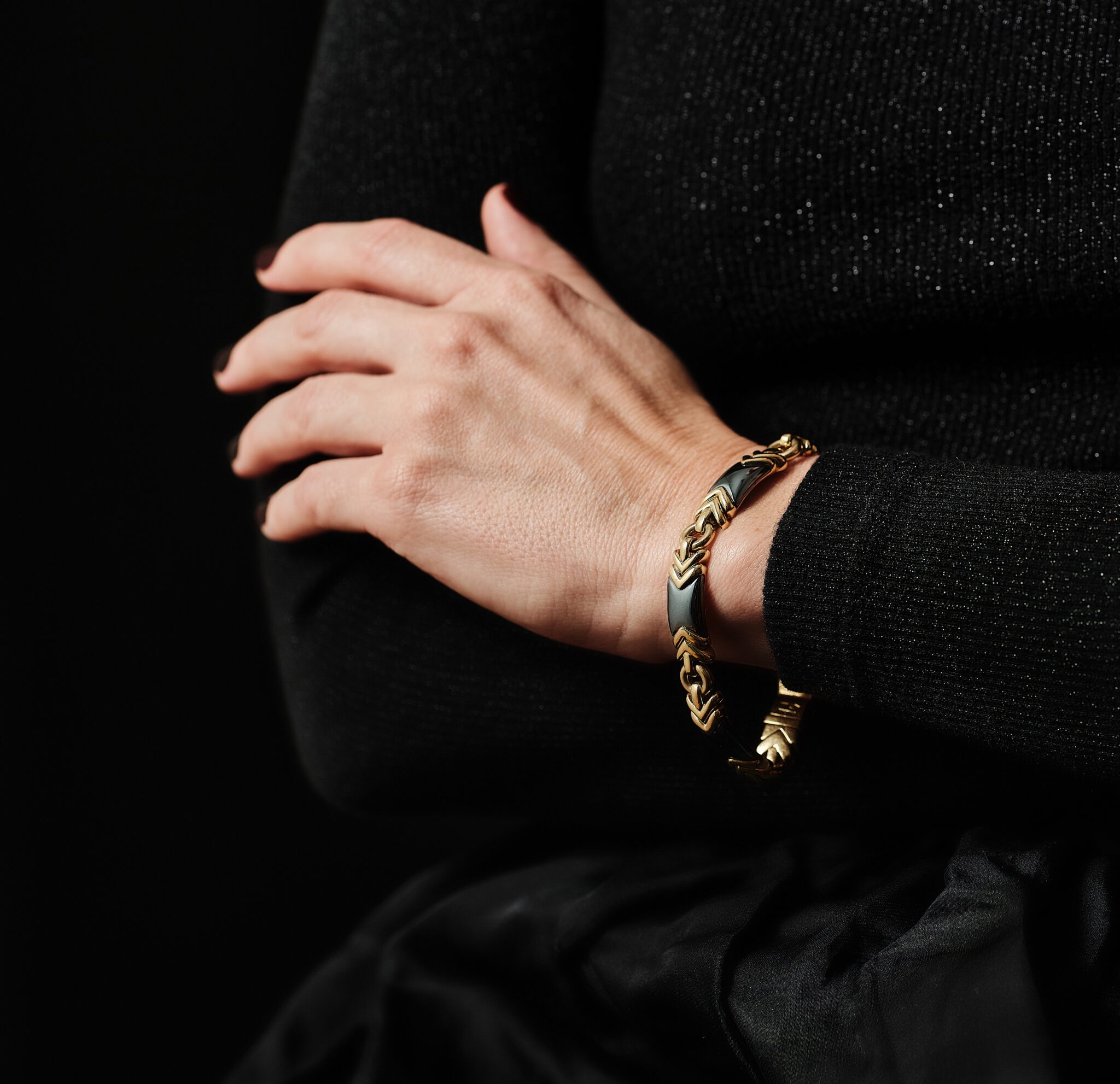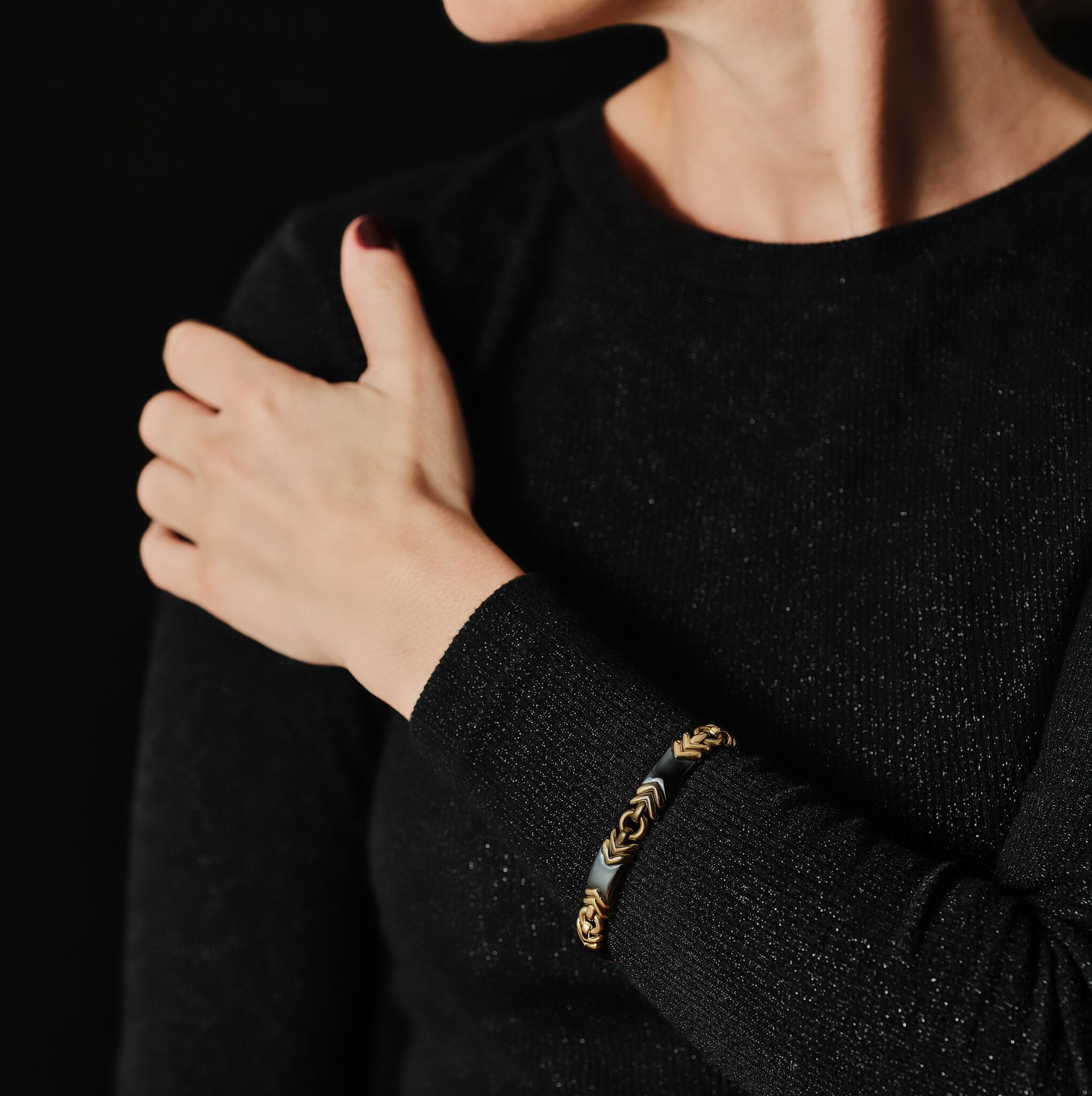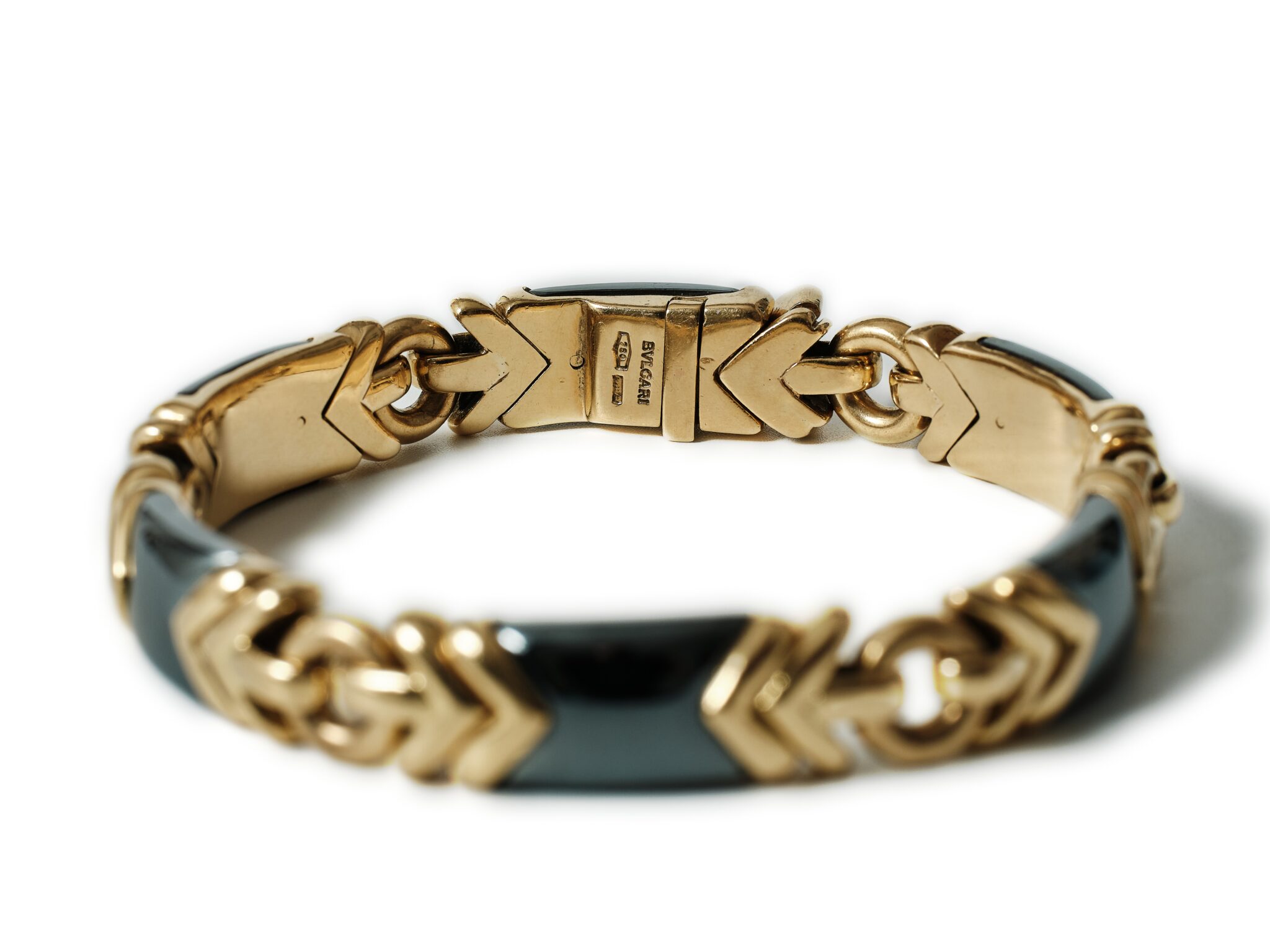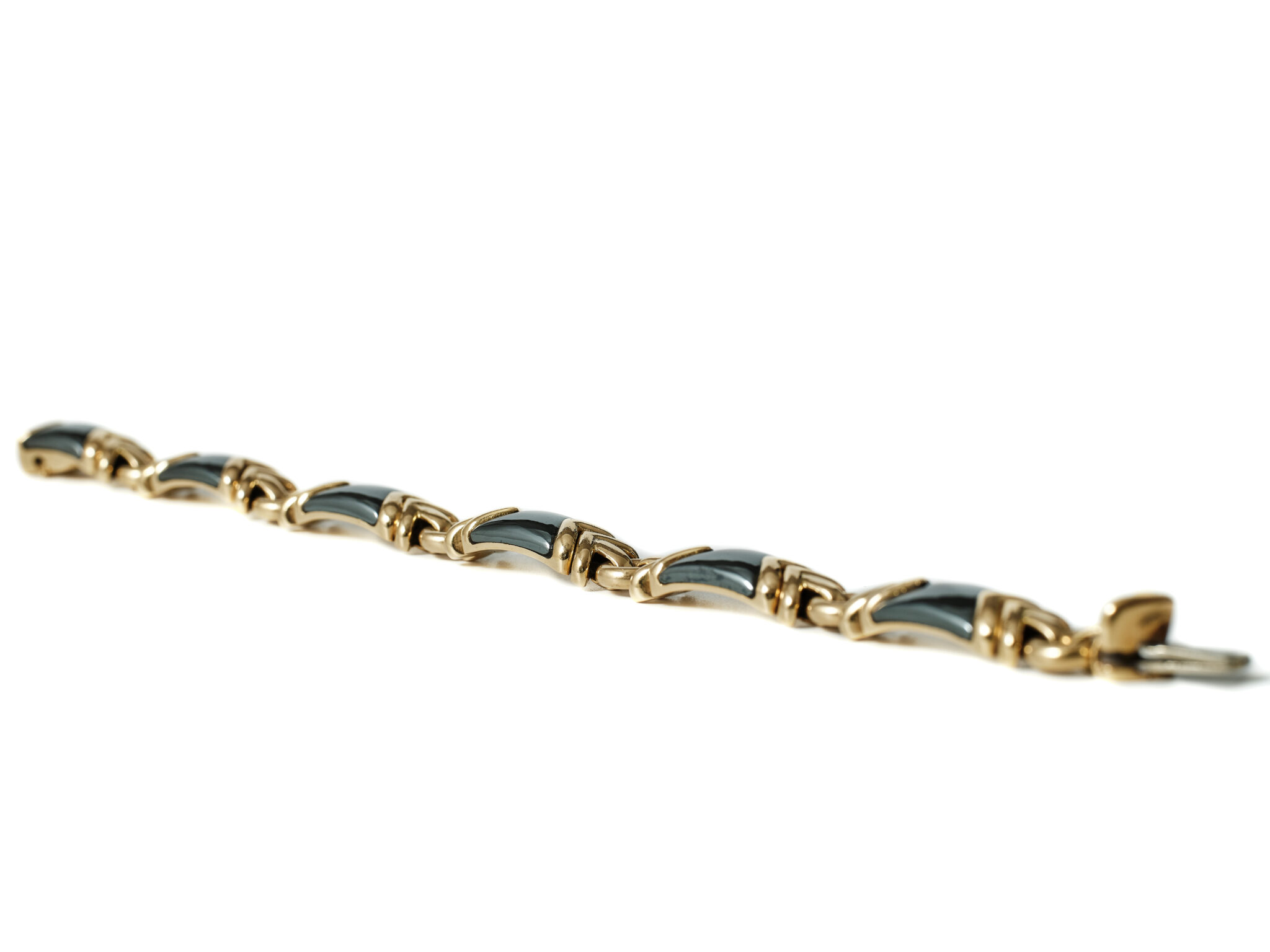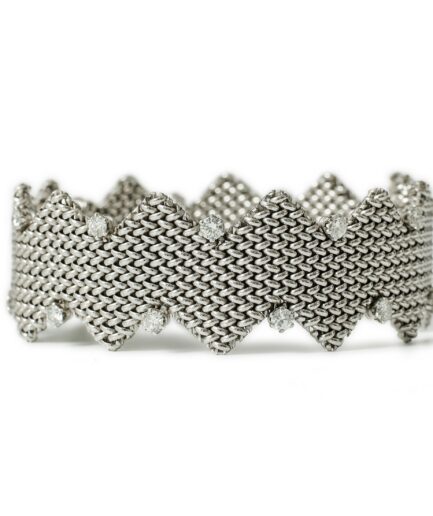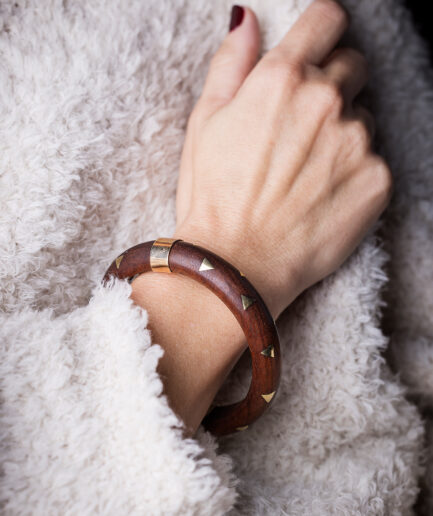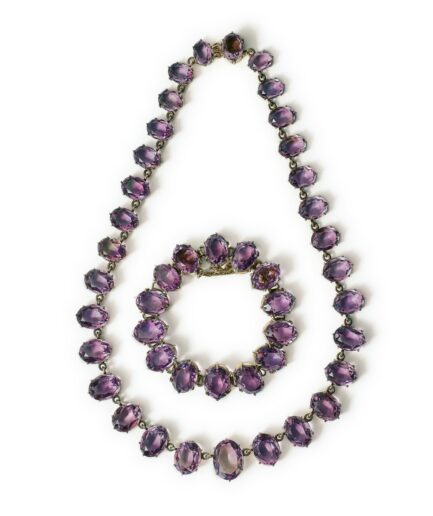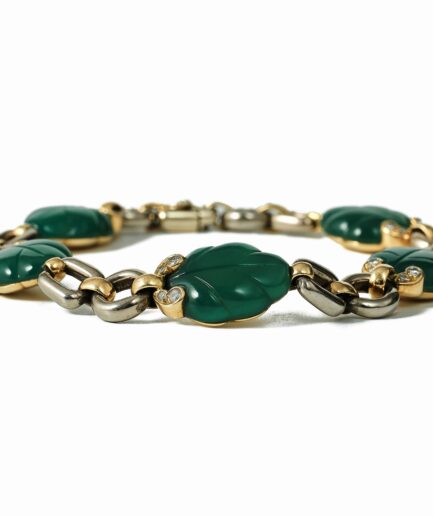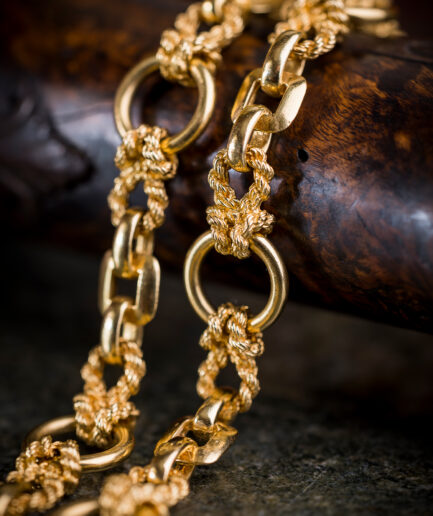Whether you are a seasoned collector or new admirer of Bvlgari bracelets here is a perfect combo of shimmering hematite and bright 18k yellow gold that makes it stand out!
Opaque metallic dark grey in color bold yet elegant bracelet created by Bulgari in Italy in the 1980s.
Bought in Münich, Germany 1989 (Copy of original invoice). Chic and wearable.
Date: 1989. Material: 750/- yellow gold hallmark. Signed BVLGARI
Total Weight: ca. 55,0 gram.
Measurement: Length 19,5 cm.
Gemstones: 6 hematites measuring approx. 9,3 x 8,3 – 13,7 mm/each.
ABOUT BVLGARI
Founded in 1884 by Sotirio Bulgari in Rome, Bulgari has become a symbol of Italian luxury and craftsmanship. Renowned for its bold designs and innovative use of gemstones, Bulgari has created some of the most iconic jewelry pieces in the world. The brand’s legacy is marked by its commitment to quality, elegance, and timeless style, making it a favorite among royalty and celebrities alike.
Unconventional materials
In the 1980s and 1990s, Bvlgari launched distinctive, versatile jewels designed to be worn from morning until night. Modular jewelry was the answer for any woman’s need: a single element with a strong design was the starting point to be replicated and combined with a wide range of precious stones.
Bvlgari is also known for their use of non-traditional materials in their jewelry designs. It was now that they introduced the use of hematite.
As the oldest (known) iron oxide mineral, hematite is intertwined with the history of the earth. It is responsible for a rusty-red pigment that has been used for centuries in ancient cave paintings, decorative tomb friezes, body adornment and even coloring modern makeup like lipstick and mascara. Hematite is recognized for its opaque black or silvery grey color with a shiny metallic luster. When sliced into thin layers, however, it has a reddish-brown color and flecks of this hue can often appear speckled across the surface of deep black. This explains its name, which derives from the Greek word ‘haema’ for blood.
When the Vikings invaded the British Isles, hematite was said to preserve the blood of fallen soldiers and protect villagers by offering a burst of energy. Seen as protection against bleeding, hematite was also popular with the Ancient Egyptians, who carved it onto talismans and medallions. Later, in the Victorian era, the properties of hematite made it the ideal choice for carving into cameos, intaglios for rings and individual beads, as well as decorative objects like figurines. It was especially preferred for Victorian mourning jewelry.
It is a mysterious gemstone because although it looks almost like a piece of silver when polished, a mirror-like metallic silver or dark gray finish.


